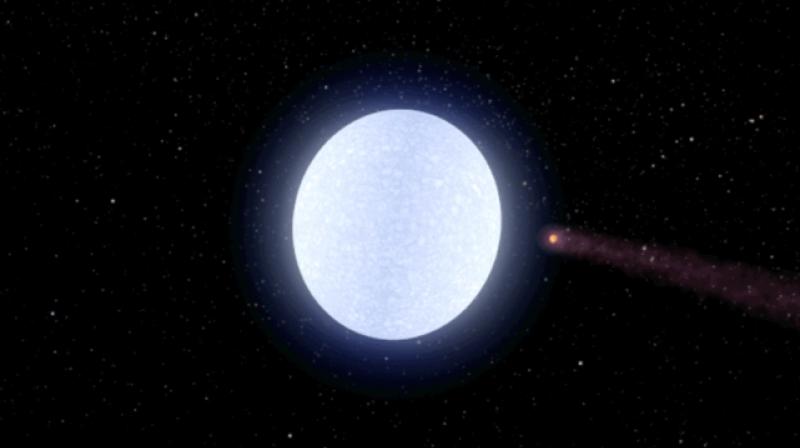Scientists discover exoplanet 'hotter than most Stars'

Scientists have discovered a Jupiter-sized exoplanet “hotter than most stars ever been discovered”, with a surface temperature of 4,327 degree Celsius and nowhere close to habitable”.
The planet, named as KELT-9b, is 2.8 times more massive than Jupiter, but only half as dense. “It is so hot, it’s being vaporised by its own star,” says NASA.
Stars are classified into seven categories based on their temperatures: O, B, A, F, G, K and M, where O stands for the hottest planet in the known universe, with temperature of nearly 3,000 degree Celsius and the letter M is used for the coolest stars, bearing temperature of about 3,500 degree Celsius. The newly discovered parent star called KELT-9 is A-type, nearly twice as hot, as our sun.
The planet is tidally locked to its star -- as the moon is to Earth -- one side of the planet is always facing toward the star, and one side is in perpetual darkness. Molecules such as water, carbon dioxide and methane can’t form on the dayside because it is bombarded by too much ultraviolet radiation. The properties of the nightside are still mysterious -- molecules may be able to form there, but probably only temporarily.
“It’s a planet by any of the typical definitions of mass, but its atmosphere is almost certainly unlike any other planet we’ve ever seen just because of the temperature of its dayside,” Gaudi said.
The KELT-9 star is only 300 million years old, which is young in star time. Given that the planet’s atmosphere is constantly blasted with high levels of ultraviolet radiation, the planet may even be shedding a tail of evaporated planetary material like a comet.
“KELT-9 radiates so much ultraviolet radiation that it may completely evaporate the planet," said Keivan Stassun, a professor of physics and astronomy at Vanderbilt University, Nashville, Tennessee, who directed the study with Gaudi.
But this scenario assumes the star doesn’t grow to engulf the planet first.
“KELT-9 will swell to become a red giant star in a few hundred million years,” said Stassun. “The long-term prospects for life, or real estate for that matter, on KELT-9b are not looking good.”
The planet is also unusual in that it orbits perpendicular to the spin axis of the star. That would be analogous to the planet orbiting perpendicular to the plane of our solar system. One "year" on this planet is less than two days.
KELT-9b is nowhere close to habitable, but Gaudi said there’s a good reason to study worlds that are unlivable in the extreme.
(—with inputs from NASA.)

